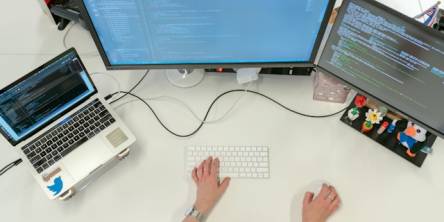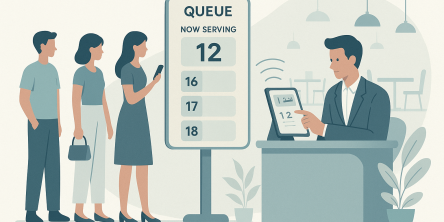Your Work Is Caught in a Trap. Its Name Is Email.

Remember the days before email? Not likely. Most organizations started adopting email in the 1990s as a way to facilitate better communication.
Email came with a lot of promises that it largely delivered on: connecting people far away, reducing cost from postage, allowing for asynchronous work, and improving the speed of communication.
But, like many things, we ended up pushing it a little too far.
Ok, maybe a lot too far.
We now use email to sign up for services, have long conversations, receive coupons, get updated, tell someone we’re mad, inform everyone about Madeline’s birthday party, store plane tickets, and mark tasks to be done.
In short, we’ve overdone email. And it has created a trap for the real work we are supposed to be doing.
Email is not work
Email has become such a central part of our work that the first action for many people when they are starting ‘work’ is to fire up their email.
The problem is that email is not work. Email is communication about work–and dozens of other things too. But somehow, if we spend half the day going through all the emails we receive and replying to a few of them, we feel like we’ve accomplished something.
But what would you say if you saw someone standing by their physical inbox in the mailroom at the office for half the day? Or what about the person who would get up to check it every thirty minutes, only to end up spending most of the day back there?
You see them sorting through letters, quietly laughing, and dumping a bunch of letters in the recycle bin. Curiously, you ask, “What are you doing?”
“Working.”
“Do you work in the mailroom now?”
“No, I’m just trying to clear out my inbox.”
Email is distraction
Despite that shot of dopamine, you get when you see a new message come into our inbox, spending additional time in an email is not helping you at all. It’s a distraction.
If you were managing that person who is up out of their desk and in the mailroom every thirty minutes, you would tell them to find a way to focus on their work. Many of us treat email this way. We get notifications and buzzers and bright red numbers that appear every time a new message comes through.
And the worst part is that we have trained ourselves to believe that checking email is our work. So much so that many of us are caught in a trap. We go to the office and spend a few hours sorting through and responding to email, an hour or two for meetings, and we have very little time left for the actual work we are supposed to do. We leave the day not accomplishing much and our work is caught in the trap.
Use email for what it is for
Email still holds an important place in the workspace, just like the mailroom used to. However, it’s only effective when you limit its use to what it is intended for.
Just like physical mail, email is best regulated to formal communication with people outside of your office.
When we try to use email to track long conversations, manage processes, organize projects, store receipts, or set reminders, we misuse the tool and open up our work for chaos.
Otherwise, use something else
Here are several alternatives you should consider to lessen your use of email around the office and get your work out of the email trap.
Messaging apps. For quick (and even lengthy) conversations, rather than shooting someone an email, have the conversation in a dedicated messaging app. Messaging apps allow for more instant access to people and reduce the urgency required to check your email all day long.
Process management. Communication around routine standard processes shouldn’t happen in email. Take paid time off management for example. Rather than sending an email to your manager that might get lost amongst a sea of other communication, use a dedicated PTO tracker that will quickly route the required information where it needs to go. Any standard, predictable process can be run through an efficient process automation tool.
Project management. Projects are usually one-time events that require a lot of coordination. Email is horrible at coordination. You want to use a project management tool such as a kanban-style board where multiple team members can see what is going on instantly and how to collaborate better.
Task management. Many people will either star or leave messages in their inboxes that they need to take care of later. However, email is not a good way to organize and prioritize the tasks you need to do. By using a dedicated task management tool, you can better focus on the highest priority items and not let your efficiency be dependent on the next email that comes into your inbox.
Set Your Work Free
Email has been a great tool for offices around the world, but it’s time to regulate it to its place. So many other great options exist that do a much better job of helping you organize and communicate about work. While no one likes to use a dozen different apps to manage work, you need to be very dedicated to understand the different types of work and how you can best approach them. Try a new solution today and take your work out of the email trap!
Similar Articles
The modern age of customers expect constant availability, no matter what the offer. And for that, the market requires rapid innovation cycles. In such a high stakes environment, technology infrastructure is more than just a cost center.
When evidence seals fail, cases weaken. Explore how compromised chain of custody can derail investigations and jeopardize justice.
Compare hydraulic and traction residential elevators to find the best fit for your home. Learn how each system works, their pros and cons, space needs, energy use, and maintenance requirements.
Extend the lifespan of your commercial marina docks with proactive maintenance. Learn essential inspection routines, material-specific care, and safety tips to protect your investment and ensure long-term dock performance.
Learn the key factors in designing an engineered fall protection system. Discover how hierarchy of controls, task analysis, structural integrity, and fall clearance ensure safety and compliance.
Today, modern businesses face constant pressure to operate with maximum efficiency. This requires a technology infrastructure that is both agile and robust. However, the traditional model of on-premises data centers often has significant limitations. These legacy systems can drain valuable resources from teams.
When people are hungry, standing in line for a table feels tiring and unpleasant. In fact, research shows that most individuals will just walk away if they have to wait longer. They will go and find another place to eat.
In the early stages of designing new community centers, fire stations and administration buildings, city planners and architects are forced to make a crucial decision: What building material is best suited for providing the most value, safety and longevity to the public?
Amazon Simple Queue Service (SQS), Simple Notification Service (SNS), and EventBridge are just a few of the messaging services that AWS provides to meet various demands when it comes to creating scalable and effective cloud systems.









